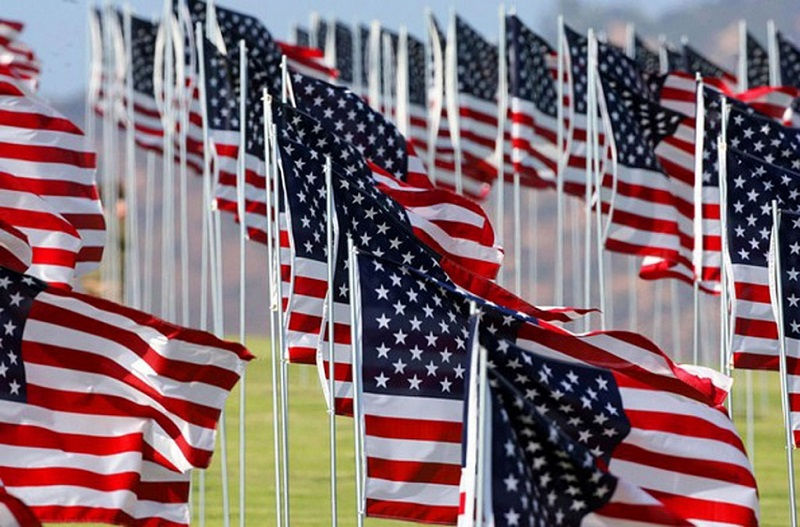Click the tartan to view its entry in The Scottish Registers of Tartans which includes registration details, restrictions, and registrant information.
Unregistered tartans may link to one of the web's online design environments for similar information.
For any questions about reproduction of designs or weaving of these tartans, please contact the registrant directly or via this website.
Independence Day
"Ev'ry heart beats true 'neath the Red, White and Blue,
Where there's never a boast or brag.
But should auld acquaintance be forgot,
Keep your eye on the grand old flag."
~"Grand Old Flag", George M. Cohan (1906)
On June 14, 1777, the Second Continental Congress passed the Flag Resolution which stated: "Resolved, That the flag of the thirteen United States be thirteen stripes, alternate red and white; that the union be thirteen stars, white in a blue field, representing a new constellation." This tartan was inspired by the first American flag to be nicknamed "Old Glory". Owned and named by the 19th-century New England sea captain William Driver (1803 -1886), the original 24 star flag, made in 1824, passed into legend and bequeathed its name to all American flags. The colours and geometry are all significant, including the following: red for hardiness and valour; white symbolizing purity and innocence; blue representing vigilance, perseverance and justice; and 13 alternating red and white stripes represent the original thirteen British colonies that declared independence from the Kingdom of Great Britain becoming the first states in the Union. 🇺🇸
Recently designed in 2016 by Steven Patrick Sim, this new tartan was created to honour the Flag of the United States of America.
The tartan was inspired by the first American flag to be nicknamed "Old Glory". Owned and named by the 19th-century New England sea captain William Driver (1803 -1886), the original 24 star flag, made in 1824, passed into legend and bequeathed its name to all American flags.
The tartan commemorates the 100th anniversary of President Woodrow Wilson's Proclamation in 1916, establishing Flag Day, the 14th of June, as the official anniversary of the Flag Resolution of 1777.
On June 14, 1777, the Second Continental Congress passed the Flag Resolution which stated: "Resolved, That the flag of the thirteen United States be thirteen stripes, alternate red and white; that the union be thirteen stars, white in a blue field, representing a new constellation."
The colours and geometry represent the following: red stands for hardiness and valour; white symbolizes purity and innocence; blue represents vigilance, perseverance and justice. 100 blue threads commemorates the one hundredth anniversary of the Proclamation; 13 alternating red and white stripes represent the original thirteen British colonies that declared independence from the Kingdom of Great Britain becoming the first states in the Union; 5 white stripes in both the warp and weft cross on the blue field creating 25 accents, 24 of which represent the stars (or states) of the Union from the original Old Glory flag; the 25th becomes a memorial to Captain Driver himself representing the white anchor added to Old Glory in 1861 signifying Driver's maritime career at sea.
For more on the fascinating history of the original "Old Glory" flag and its colourful journey from a sea-voyaging flag to its escape from seizure by the Confederate Army during the American Civil War, click the modern flag!







